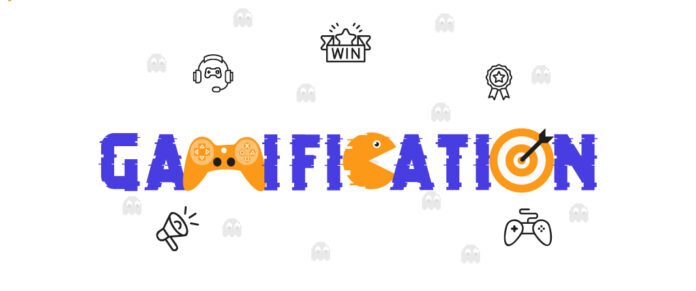In today’s competitive retail landscape, keeping customers engaged and loyal is more challenging than ever. That’s where a solid gamification platform comes right in. By integrating game-like elements into the shopping experience, retailers can transform mundane tasks into exciting adventures, driving customer interaction and boosting sales.
I’ve seen firsthand how gamification can turn a simple shopping trip into a rewarding experience. From earning points for purchases to unlocking exclusive rewards and challenges, these platforms offer endless possibilities for retailers to connect with their audience in innovative ways. Whether you’re a small boutique or a large chain, adopting a gamification strategy could be the key to standing out in a crowded market.
Understanding Gamification in Retail
Gamification uses game-like elements in non-gaming environments to engage users. In retail, it’s a strategy to enhance the shopping experience and retain customers.
What Is Gamification?
Gamification involves integrating elements like points, rewards, and challenges into everyday activities. Retailers incorporate these elements to make shopping more engaging. For instance, customers earn points for purchases and unlock rewards after reaching certain thresholds. They face challenges that encourage more frequent visits.
Why It Matters for Retailers
Retailers benefit greatly from gamification. It boosts customer engagement, increases sales, and improves loyalty. Customers return more often if they feel rewarded for their actions. According to studies, gamified experiences can increase customer interaction by 30%. By differentiating from competitors, retailers build a stronger brand presence. Gamification also provides valuable data. Retailers gain insights into customer preferences and behaviours. Analysing this data helps tailor future marketing strategies.
Key Features of a Gamification Platform for Retailers
Retailers benefit significantly from gamification platforms by improving customer engagement and enhancing loyalty. Key features like engagement mechanics and reward systems play crucial roles in this process.
Engagement Mechanics
Engagement mechanics drive interaction by incorporating game elements into the shopping experience. Quizzes, puzzles, and challenges motivate customers to spend more time on platforms. According to a 2022 study by PWC, 72% of consumers interacted longer with gamified content. Leaderboards and badges give customers a sense of achievement and competition, further encouraging repeat visits. By integrating these elements, retailers can capture customer interest and foster ongoing engagement.
Reward Systems
Reward systems incentivise customer participation through tangible benefits. Points, discounts, and exclusive access are common examples. According to Forbes, retailers offering points-based rewards see a 20% increase in customer retention. Tiers and loyalty levels provide escalating incentives, making customers want to reach higher levels for better rewards. Personalised rewards based on customer behaviour create a tailored shopping experience, enhancing satisfaction and loyalty. Recurrent engagement through these systems can significantly boost sales and customer lifetime value.
Benefits of Implementing Gamification
Retailers integrating gamification platforms witness significant advantages that drive both customer loyalty and brand visibility.
Increased Customer Loyalty
Gamification boosts customer loyalty immensely. By leveraging reward systems and points, retailers encourage repeated interactions. For example, a loyalty programme where customers earn points for every purchase creates a sense of achievement. Personalised challenges and quests, tailored to customer preferences, make users feel valued. According to reports, retailers implementing gamified loyalty strategies see a 20% boost in repeat purchases.
Enhanced Brand Awareness
Gamification also enhances brand awareness. Interactive and engaging content, like quizzes and social media challenges, encourages sharing and participation. For instance, a retailer creating a themed quiz related to its products can engage users and increase brand mentions on social platforms. Leaderboards and rewards for social sharing further extend brand reach. Data indicates that brands using gamified content experience up to 60% higher social media engagement.
Challenges and Considerations
Gamification platforms present various challenges for retailers despite their numerous benefits. Retailers face hurdles during integration and must balance fun with profitability.
Integration Issues
Implementing gamification in existing systems often proves complex. Retailers need to ensure seamless integration with POS systems and CRM software. Incompatible systems may lead to data loss, inaccurate tracking, or a poor user experience. For example, integrating a point system with outdated POS terminals can delay transactions and confuse customers.
Data security is another critical issue. Retailers collect immense amounts of customer data through gamification platforms. Proper encryption and secure storage methods are essential to protect this data. Any breach can result in loss of customer trust and significant financial penalties.
Balancing Fun and Profitability
Retailers must strike an appropriate balance between making games engaging and maintaining profitability. Overly simplistic games can bore customers, while overly complex ones may frustrate them. Retailers need to design games that are fun yet aligned with business objectives.
Reward systems also demand careful calibration. Retailers must offer appealing rewards without undermining profitability. For instance, excessive discounts can hurt the bottom line. Thoughtful reward structures, like tiered discounts or exclusive experiences, keep costs manageable while maintaining customer interest.
Strategic game mechanics, like leaderboards or social sharing features, drive engagement at minimal costs. Retailers should analyse customer behaviour data to fine-tune these features and maintain a balance that fosters loyalty without eroding profits.
To Conclude
Gamification platforms offer retailers a powerful tool to boost customer engagement and loyalty. By incorporating game-like elements such as points, rewards, and challenges, retailers can create a more exciting shopping experience that encourages repeat purchases and enhances brand visibility. The key to success lies in balancing the fun elements with profitability and ensuring seamless integration with existing systems while maintaining robust data security. With strategic planning and execution, gamification can transform the retail landscape, driving both customer satisfaction and business growth.





